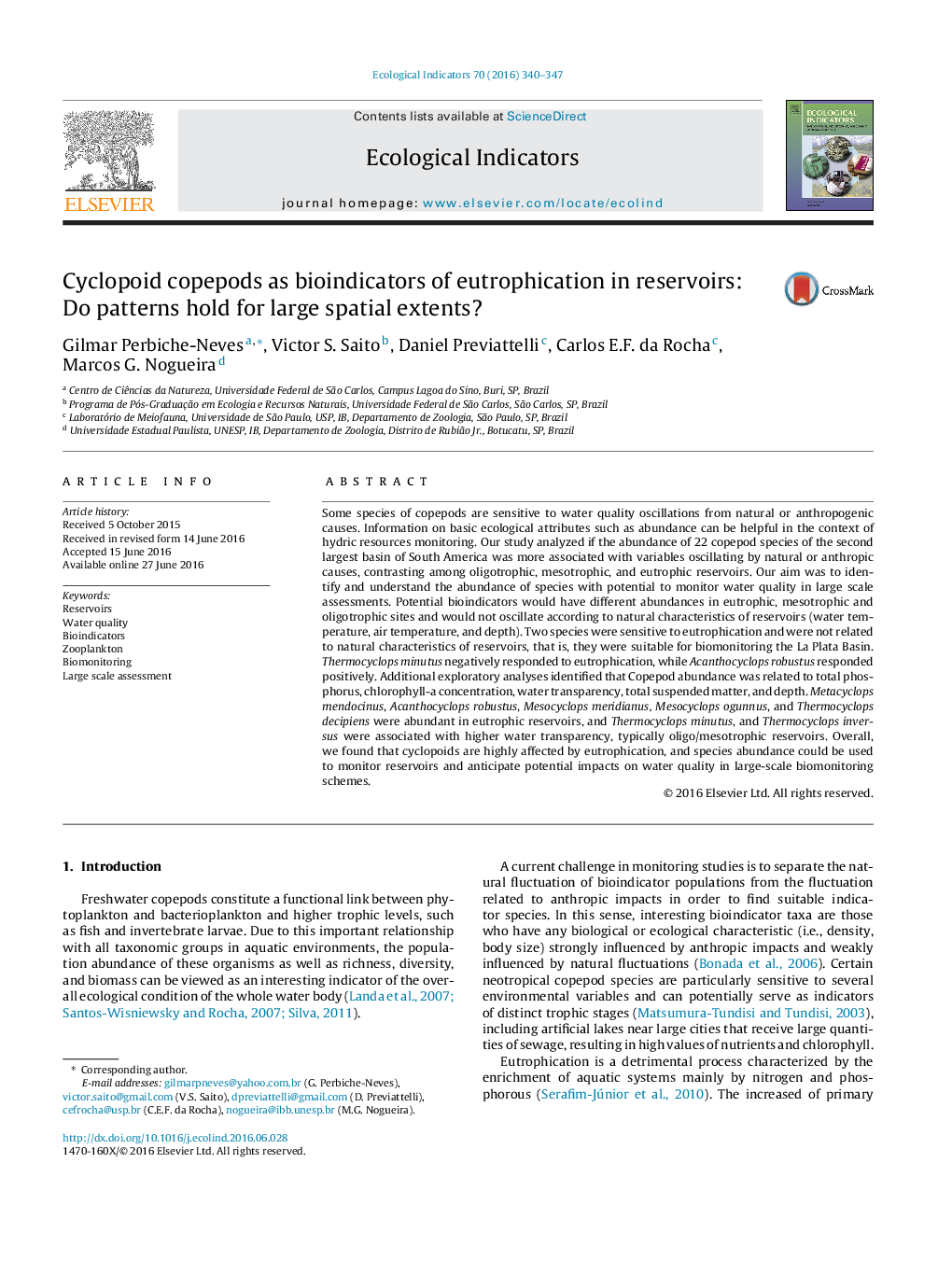| کد مقاله | کد نشریه | سال انتشار | مقاله انگلیسی | نسخه تمام متن |
|---|---|---|---|---|
| 6293106 | 1617132 | 2016 | 8 صفحه PDF | دانلود رایگان |
عنوان انگلیسی مقاله ISI
Cyclopoid copepods as bioindicators of eutrophication in reservoirs: Do patterns hold for large spatial extents?
ترجمه فارسی عنوان
کپوپودهای سیکلوپوئید به عنوان نشانگرهای زیستی از ائوتروفیکسیون در مخازن: آیا الگوهای برای اندازه های فضایی بزرگ وجود دارد؟
دانلود مقاله + سفارش ترجمه
دانلود مقاله ISI انگلیسی
رایگان برای ایرانیان
کلمات کلیدی
مخازن، کیفیت آب، بیو شاخص ها، زئوپلانکتون، بیومونیتوری، ارزیابی مقیاس بزرگ،
موضوعات مرتبط
علوم زیستی و بیوفناوری
علوم کشاورزی و بیولوژیک
بوم شناسی، تکامل، رفتار و سامانه شناسی
چکیده انگلیسی
Some species of copepods are sensitive to water quality oscillations from natural or anthropogenic causes. Information on basic ecological attributes such as abundance can be helpful in the context of hydric resources monitoring. Our study analyzed if the abundance of 22 copepod species of the second largest basin of South America was more associated with variables oscillating by natural or anthropic causes, contrasting among oligotrophic, mesotrophic, and eutrophic reservoirs. Our aim was to identify and understand the abundance of species with potential to monitor water quality in large scale assessments. Potential bioindicators would have different abundances in eutrophic, mesotrophic and oligotrophic sites and would not oscillate according to natural characteristics of reservoirs (water temperature, air temperature, and depth). Two species were sensitive to eutrophication and were not related to natural characteristics of reservoirs, that is, they were suitable for biomonitoring the La Plata Basin. Thermocyclops minutus negatively responded to eutrophication, while Acanthocyclops robustus responded positively. Additional exploratory analyses identified that Copepod abundance was related to total phosphorus, chlorophyll-a concentration, water transparency, total suspended matter, and depth. Metacyclops mendocinus, Acanthocyclops robustus, Mesocyclops meridianus, Mesocyclops ogunnus, and Thermocyclops decipiens were abundant in eutrophic reservoirs, and Thermocyclops minutus, and Thermocyclops inversus were associated with higher water transparency, typically oligo/mesotrophic reservoirs. Overall, we found that cyclopoids are highly affected by eutrophication, and species abundance could be used to monitor reservoirs and anticipate potential impacts on water quality in large-scale biomonitoring schemes.
ناشر
Database: Elsevier - ScienceDirect (ساینس دایرکت)
Journal: Ecological Indicators - Volume 70, November 2016, Pages 340-347
Journal: Ecological Indicators - Volume 70, November 2016, Pages 340-347
نویسندگان
Gilmar Perbiche-Neves, Victor S. Saito, Daniel Previattelli, Carlos E.F. da Rocha, Marcos G. Nogueira,
